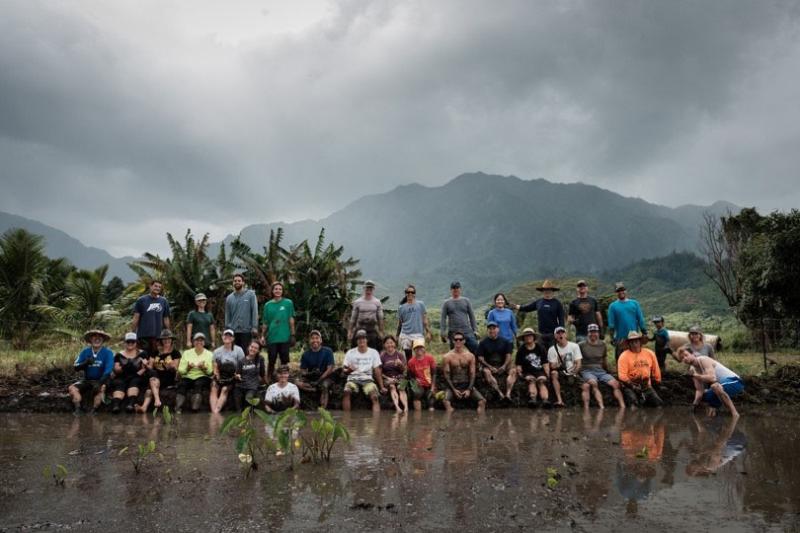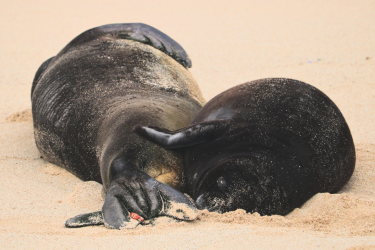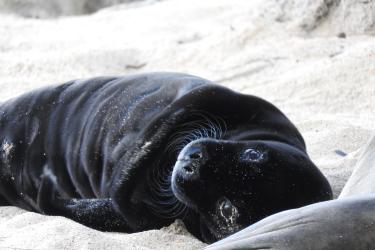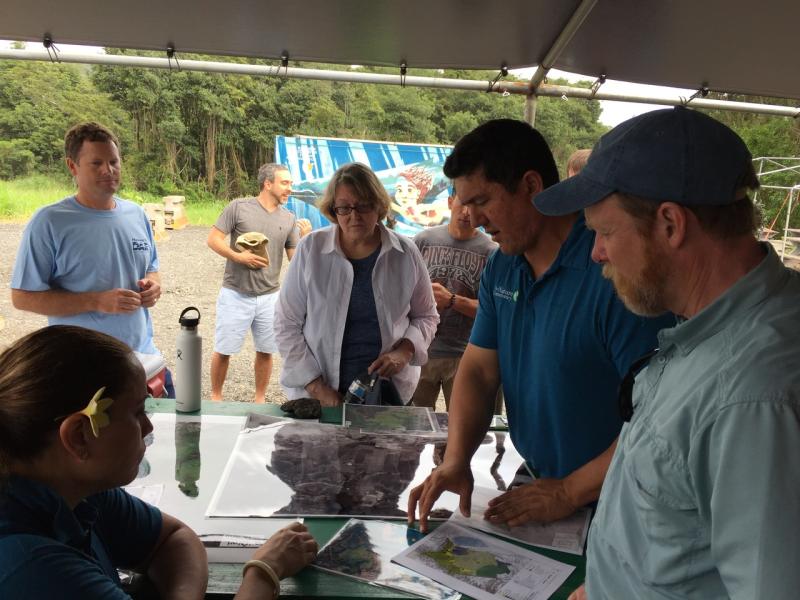Since The Nature Conservancy (TNC) is one of the Office of Habitat Conservation’s closest partners, we interviewed Kim Hum from TNC in Hawai’i to hear her perspective on our partnership as part of Habitat Month. With dozens of community-based restoration projects around the country as well as many other joint-efforts, TNC and NOAA staff work closely to conserve habitat on land and in the water.
Kim Hum is a 28-year veteran of The Nature Conservancy in Hawaiʻi, and has served as their Marine Program Director for the past 17 years. She leads a staff of 20 professionals working with local communities and government partners on coral reef, coastal wetland, and other critical marine habitat restoration and science projects

Kim Hum leads The Nature Conservancy’s Hawai‘i Marine Team.Credit: TNC.
What is The Nature Conservancy’s mission in Hawaiʻi, and what does it mean to you?
The Nature Conservancy’s mission is to, "conserve the lands and waters on which all life depends." In Hawaiʻi, that means we focus our work on protecting and restoring the native forested watersheds, coastlines, and coral reefs that provide important habitat for native species, fresh clean water, coastal protection, and the many other social, economic and cultural benefits nature provides to people. In Hawaiian culture, people and nature are interconnected— they are not apart from one another. It is this recognition that makes our work so meaningful and personal in the islands.
How does TNC work to accomplish its mission and protect critical habitat?
TNC’s marine work is built on a strong foundation of support for the local communities that are managing their coastal and near shore marine resources. We bring expertise in science, planning, policy, and management to help build the capacity of our community partners to sustainably manage the local fisheries and coastal resources that are critical to their heritage and livelihoods.

Staff and volunteers of TNC and Kākoʻo ʻŌiwi restore loʻi kalo (taro patch) in Heʻeia, O‘ahu. Credit: TNC.
Our partnership with NOAA supports community-based coastal restoration in the West Hawaiʻi Habitat Focus Area on Hawaiʻi Island and in the Heʻeia ahupuaʻa on Oʻahu. The Heʻeia project is focused on restoring a wetland ecosystem to minimize flood damage during storms, reduce sediments and nutrients flowing out onto the reefs of Kāneʻohe Bay, build coastal resilience, and provide healthy food and clean water to the local community. In West Hawaiʻi, our NOAA partnership has helped build networks of communities that are learning from and supporting each other’s restoration work, identify the most resilient reefs for management, target the sources of land-based pollutants such as sediments and nutrients, and develop strategies to reduce their impacts on coral reefs and human health.
How has TNC’s partnership with NOAA evolved over time?
Our partnership with NOAA has evolved over the past 17 years from baseline monitoring and planning to on-the-ground management in partnership with the State of Hawaiʻi, local communities, and other stakeholders. Together, we recognize the important role people play in building resilience into healthy coastal ecosystems, and how critical it is to engage them from planning to management.

TNC, NOAA, and the State of Hawaiʻi partner with local community group Kākoʻo ʻŌiwi to restore the Heʻeia ahupuaʻa. Credit: NOAA.
In 2015, the first statewide mass bleaching event really opened people's eyes to how fragile our reefs are. People are directly experiencing the effects of rising sea levels and sea surface temperatures, and seeking solutions to the problems created by global climate change. Our focus is on building local capacity to manage local stressors in order to increase coastal and reef resilience (e.g. their ability to resist and recover from the global impacts over which we have little direct control).
What is TNC’s “Habitat Hero” superpower?
One of TNC’s key strengths is to bring partners together to tackle the urgent challenges facing our coastal communities. For example, we have helped bring the science gathered through the West Hawaiʻi Integrated Ecosystem Assessment (IEA) together with the local knowledge and traditional management practices of communities to inform resource management along the West Hawai‘i coast. TNC and NOAA’s global experience in science, restoration, and resilience can help ensure local management actions are based on the best available science as well as proven local practices. Together, we can craft a new way forward to address the larger global threats and changes we’re seeing in the water. The “superpower” is the partnership itself—none of us can do this alone.

Volunteers restore an ancient rock wall at Kīholo Fishponds in West Hawai‘i. Credit: Nancy Erger.
The real Habitat Heroes are the communities themselves. We are honored to work with and learn from them. While TNC and NOAA have been fortunate to have the resources to invest in West Hawai‘i and Heʻeia over the long term, it is the people who are of and from these places that will be doing the hard work long after we are gone. They are the true heroes.
In the end, success isn’t measured by the acres restored, but by the trust and relationships built between people over time. My biggest challenge as a manager is to get my staff to stop working so hard. But when they stop working, they start volunteering because they’re part of the community, and they care deeply about the people who have become their neighbors, their friends, and their family in the truest sense of the word.
What significant accomplishment are you most proud?
I am so proud of our staff and partners every day as I drive into work past the Heʻeia restoration project. Together, we just removed 5.5 acres of invasive mangrove, and we are already seeing the return of native species and fresh water flowing through a stream that has been clogged with sediment for decades. At the mainland scale, that may not seem like a lot of area, but in Heʻeia it is truly transformative. And as I drive home at the end of the day, I am in awe of the work we have accomplished together, and the difference we have collectively made—and continue to make—in this very special place. I am honored to be a part of the TNC team in Hawai‘i. Our staff bring their passion and creativity to work and to life.
Learn more about TNC’s restoration work in Hawai‘i:




